Loewe FW23 Menswear: Materiality vs. Form, Intimacy vs. Protection

Published on VMAN Digital on 3.10.23
Words by Nicholson Baird
Creative Director of Loewe, Jonathan Anderson, has undoubtedly become the modern-day leading voice in surrealism within the fashion industry, proved once again today, yet in a new vein — what he has called “a reductionist act.” The collection Anderson has presented for Fall 2023 is notably more subtle in its color palette, yet goes, quite frankly, absolutely berserk in his delectable use of thought-provoking materiality and carefully designed silhouettes.
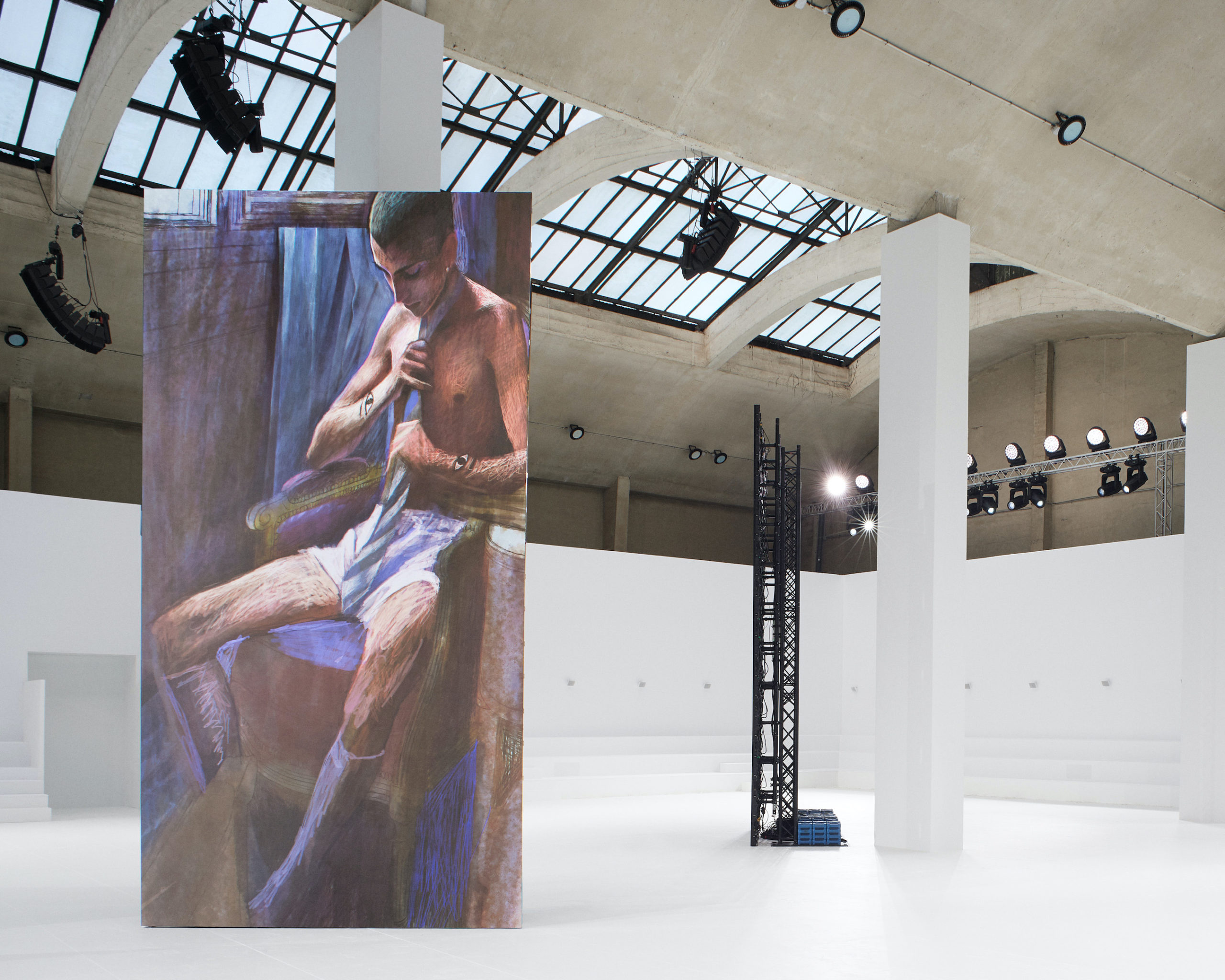
There is a focus on materiality that is inspired by Renaissance paintings, with Anderson creating silhouettes that feel almost like a moment captured in time, similar to that of a work of art. As the resident king of fine art references, Anderson has tapped American artist Julien Nguyen to create two large-scale digital images depicting intimate moments of Loewe muse Nikos. Similar to Anderson’s focus on materials this season, Nguyen uses copper and vellum as bases for his paintings and then employs tradition with his use of classical painting materials.
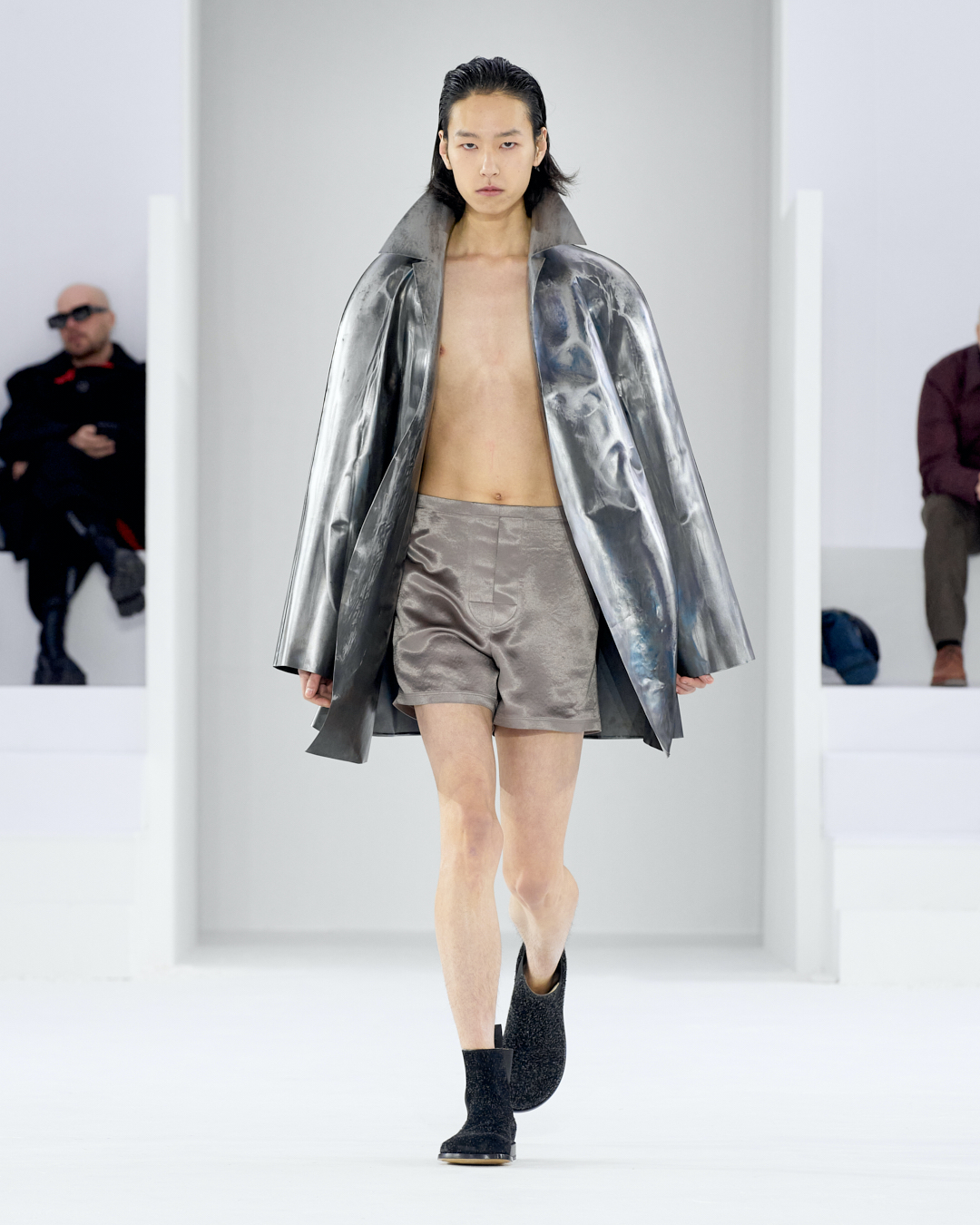
For the materials this season, Anderson has spared no expense. There have been shirts crafted out of parchment that mirror this idea of a captured moment in time, with the garments appearing stagnant atop of the models’ bodies as they move. What may be the most impressive material feat of the collection is seen in the two coats crafted out of metal. Seen both in copper as well as steel, the coats appear to be undulating in the wind, with the hem flying away from the body in a flawless technical foray of capturing a fleeting moment in the creation of a still object. On the other side of the coin from the tough metallics, satin has been employed throughout the collection and left to hang gently on the body.
In terms of surrealist silhouettes, Anderson has presented quite an impressive lineup of coats this season. Felted wool coats have been crafted with what appears to be absolutely zero seams, in a technical feat that defies all logic. These coats, appearing in both a suit jacket length and an overcoat length, are tubular in their form, solid in their stature, yet soft in their materiality. Another fabulous outerwear moment is in the range of classic trench coats that look like they have been inflated via bike pump with their delightful puffiness and billowing shape at the hem.
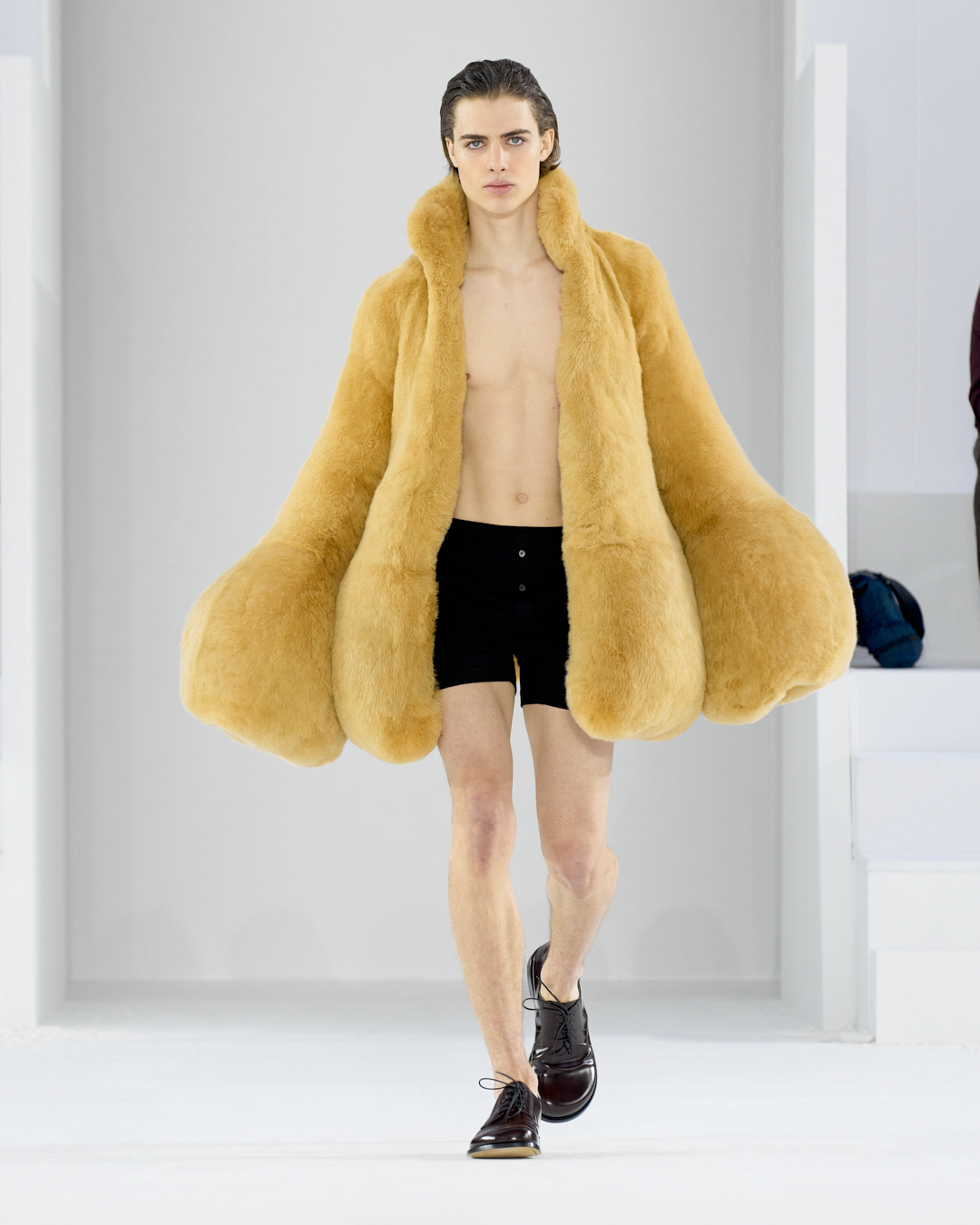
The coat style that is sure to be the most eye-catching is the faux-fur styles of looks 44 and 45. These plush coats have been pumped up to the absolute max in the lower portion of the garment, with the body and sleeves puffing out in a form that almost resembles the fluffiness of a lovingly baked pastry. Moments like these are where you can tell that Anderson is having pure fun with his designing, and it is this infectious feeling of unbridled joy that consumes every viewer and keeps them on the edge of their seat season after season.
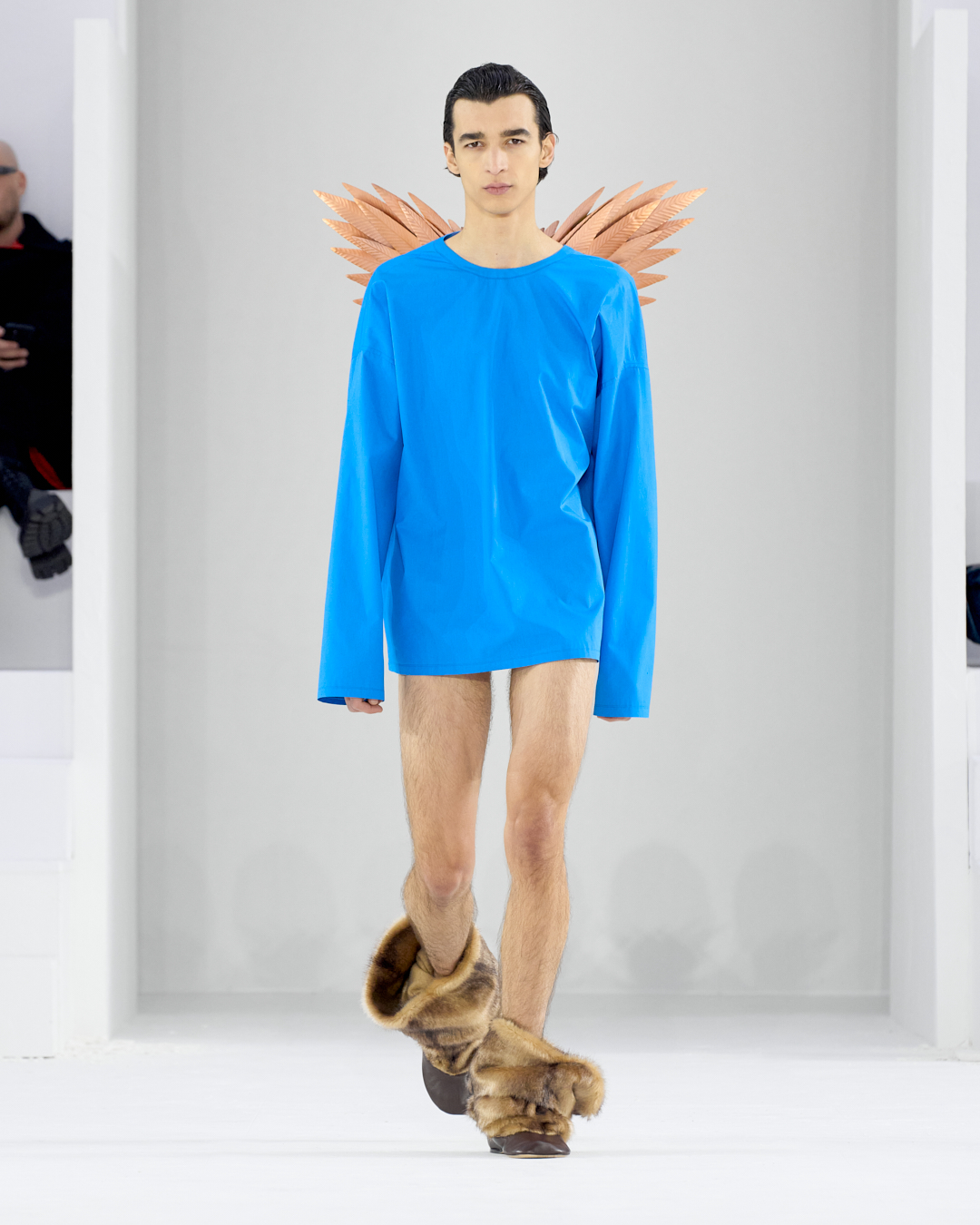
What may have been the most consistently shocking current throughout the collection was the lack of pants. Roughly eight of the forty-eight looks included a more traditionally tailored-trouser — the hero bottoms of the collection are long johns. High fashion has been having a fascinating love affair with undergarments for the past several seasons, yet Anderson’s presentation of such a large amount of long johns that are worn as pants feels like a shakeup. Long johns as a garment are worn tight to the body, which here holds a very intimate undertone, similar to that of a traditional brief. While the long johns are revealing in their tightness, they also have a sense of protection to them, covering the entirety of the leg even as an undergarment. This use of the long john may just be a euphemism for this tension of intimacy versus protection that carries throughout the collection.
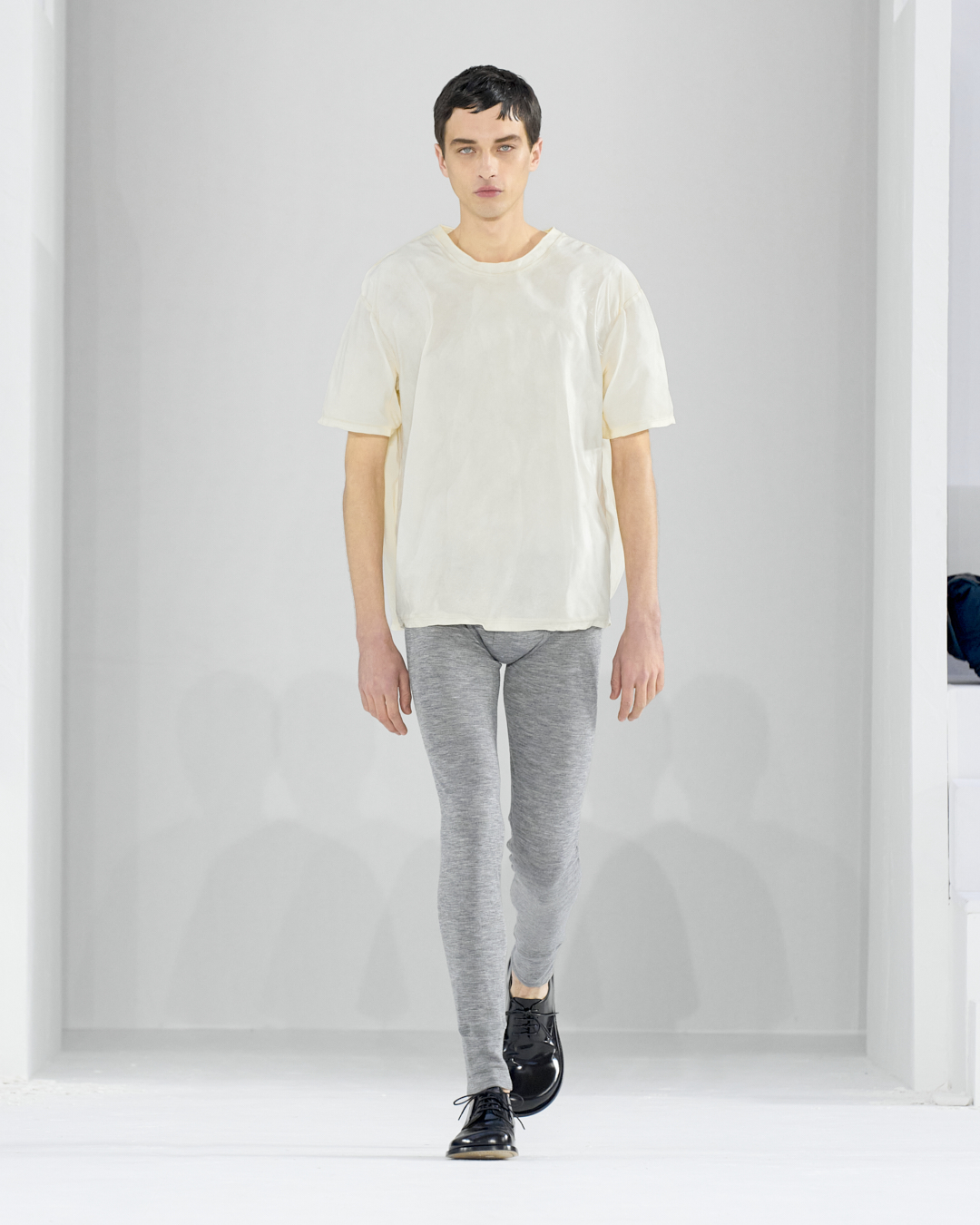
It is clear that Anderson has used this season to focus on material and silhouette, yet the hammering in of the long johns on the runway feels like it has a potent meaning behind it — I believe that a consistent choice like this from a designer like Anderson is no accident. Touching on both the intimacy and protection of the long john, there are similar themes present throughout the collection. The coats are massive and almost defensive, while paired with ultra-tiny shorts that hug close to the thigh. Oversized sweatshirts are worn as mini dresses, with no pants or shorts to be found. In the almost armor-like parchment shirts, the back is left largely barren. Even in Anderson’s act of reduction, there is a palpable sensibility that grapples with protection vs exhibition here.
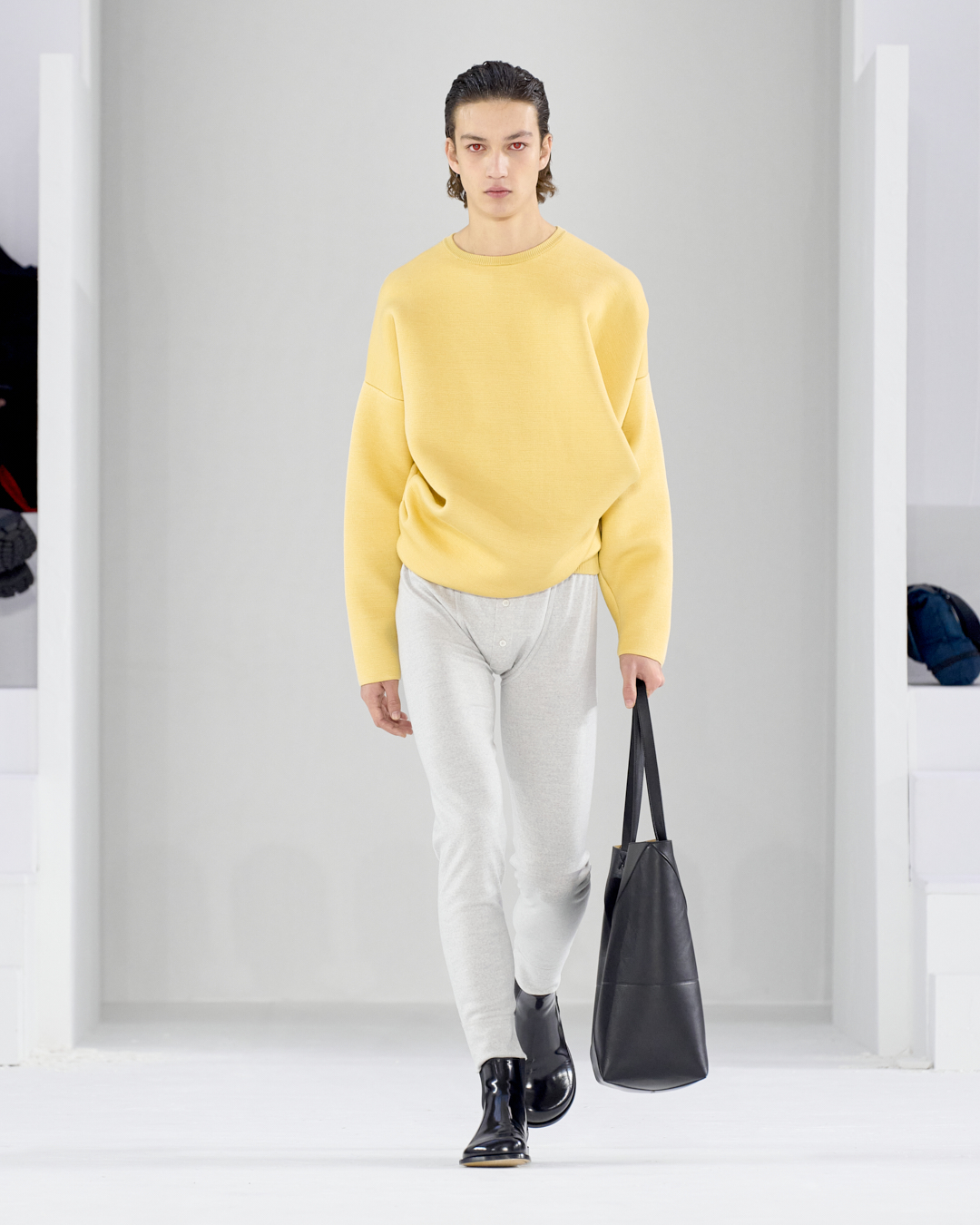
Once again, Anderson proves himself as one of, if not the, major force in fashion. The British designer created a collection void of prints; nary a pinstripe nor a floral! There is no strange imagery that is cast onto the garments, yet Anderson has no trouble conveying his sense of surrealism through subtle color, whimsical forms, and clever materials. Anderson can speak to his interests in Renaissance paintings while simultaneously speaking to this push and pull between protection and intimacy. What is the difference in choosing clothes that are meant to protect versus clothes that are meant to reveal? Anderson asks these important questions while always adding in his signature flair of surrealist joy, a quirk that has made his designs the most infectious in the industry.
